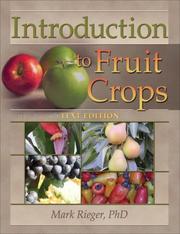| Listing 1 - 6 of 6 |
Sort by
|
Book
ISBN: 9516510795 Year: 1987 Publisher: Helsinki : s.n.,
Abstract | Keywords | Export | Availability | Bookmark
 Loading...
Loading...Choose an application
- Reference Manager
- EndNote
- RefWorks (Direct export to RefWorks)
633.94 --- 582.475.4 --- Plants yielding turpentine and rosin. Conifer resins. Turpentine tree (terebinth). Pistacia terebinthus. Pines, larches and firs. Pinus, Larix and Abies species --- Pinoideae. Pines. Pitch pine. Pinus --- 582.475.4 Pinoideae. Pines. Pitch pine. Pinus --- 633.94 Plants yielding turpentine and rosin. Conifer resins. Turpentine tree (terebinth). Pistacia terebinthus. Pines, larches and firs. Pinus, Larix and Abies species
Book
Abstract | Keywords | Export | Availability | Bookmark
 Loading...
Loading...Choose an application
- Reference Manager
- EndNote
- RefWorks (Direct export to RefWorks)
A full awareness of the role played by a healthy diet, as part of a healthy lifestyle, in countering or slowing-down chronic and degenerative diseases has strongly increased the interest in food bioactives and the return of ancient foods that are nowadays considered functional. In fact, these dietary substances, to which nutraceutical attributes are increasingly entrusted, could display disease-preventing effects on animals and humans. In this context, polyphenols, which are widespread and mostly copious in dietary plant sources, have gained a lot of attention thanks to their potential ability to halt or reverse oxidative stress-related diseases. Indeed, food could contain, beyond health-promoting compounds, toxicants which are naturally occurring or process-induced dietary compounds with adverse effects on human health. The presence and abundance of bioactives are strictly related to their food source. Edible plant components largely contain beneficial secondary metabolites, but understanding them fully is still an important challenge as complex biotic and abiotic interactions are involved in their biosynthesis. Analytical methods, which are increasingly powerful, could enhance our knowledge of food bioactives, whereas the deep investigation of their bioactivity and bioavailability could make them particularly useful.
Urtica dioica --- natural products bioactivity --- food bioactives --- nutraceuticals --- cancer therapy --- breast cancer --- Aloe vera --- Aloe vera polysaccharides --- in vitro fermentation --- SCFAs --- antioxidant capacity --- food waste recovery --- grape leaves --- UHPLC-HR-MS/MS analysis --- flavonol glycuronides recovery --- linoleic acid peroxidation products --- hexane --- gastric cells --- metabolomics --- cDNA microarray --- avocado --- LC/MS --- fat-soluble vitamins --- carotenoids --- Cannabis sativa L. --- phenylamides --- lignanamides --- hemp seeds --- high resolution tandem mass spectrometry --- U-87 glioblastoma cells --- cytotoxicity --- Pistacia vera --- antioxidant --- quality --- tocopherol --- FTIR --- discriminant analysis --- pistacia (Pistacia vera) hulls --- anticancer --- bacterial resistance --- efflux pumps --- terpenoids --- thymol --- carvacrol --- Rosmarinus officinalis L. --- fresh young shoots tincture --- polyphenols --- terpenes --- hepatoprotective --- n/a
Book
ISBN: 929043144X Year: 1989 Publisher: Rome : International Board for Plant Genetic Resources,
Abstract | Keywords | Export | Availability | Bookmark
 Loading...
Loading...Choose an application
- Reference Manager
- EndNote
- RefWorks (Direct export to RefWorks)
Walnuts --- Temperate fruits --- Actinidia --- Amelanchier. --- Amelanchier --- Carya --- Corylus --- Cydonia --- Diospyros --- Fragaria --- Juglans --- Malus --- Mespilus --- Moraceae --- Olea europaea --- Pistacia vera --- Prunus --- Punica granatum --- Pyrus --- Ribes --- Rosa --- Rubus --- Sambucus --- Vaccinium --- Temperate zones --- Mediterranean zone --- Gene pools --- Germplasm --- world --- 631.523 --- 634 --- 634 Horticulture generally --- Horticulture generally --- 631.523 Applied genetics --- Applied genetics --- Ibpgr
Book
Year: 2022 Publisher: Basel MDPI - Multidisciplinary Digital Publishing Institute
Abstract | Keywords | Export | Availability | Bookmark
 Loading...
Loading...Choose an application
- Reference Manager
- EndNote
- RefWorks (Direct export to RefWorks)
The main focus of this thematic collection is on the antimicrobial activity of essential oils and their combinations with conventional antimicrobial drugs, including the eradication of the existing biofilms, the explanation of the mechanisms underlying antimicrobial activity, and the preparation of stable formulations with essential oils, which boost their antimicrobial activity and provide greater stability. These issues are addressed in four research papers and three reviews, which present novel advances in the development and application of essential oils as antimicrobial agents via combinatorial and nano-based approaches.
biofilm --- common juniper --- immortelle --- nontuberculous mycobacteria --- stainless steel --- Pistacia lentiscus var. Chia --- Chios mastic --- ageing --- chemical profile --- antibacterial --- antifungal --- α-pinene --- β-myrcene --- GC-MS --- HPTLC --- chitosan --- coating --- essential oils --- liposomes --- mechanism --- polyelectrolyte --- bacterial biofilm --- antimicrobial --- medical devices --- antimicrobial resistance --- combination therapy --- lavender essential oil --- nanoencapsulation --- synergy --- Apiaceae --- gas chromatography-mass spectrometry --- volatiles --- antimicrobial activity --- coumarins --- nanoemulsion --- Croton cajucara --- essential oil --- antifungal activity --- n/a

ISBN: 156022259X 9781560222590 9781560222590 9781560221722 Year: 2006 Publisher: New York, N.Y.: Food products press,
Abstract | Keywords | Export | Availability | Bookmark
 Loading...
Loading...Choose an application
- Reference Manager
- EndNote
- RefWorks (Direct export to RefWorks)
Fruit --- Carya pecan --- Ananas comosus --- Pistacia vera --- Prunus persica --- Pyrus communis --- Pyrus pyrifolia --- Prunus dulcis --- Malus pumila --- Prunus armeniaca --- Prunus domestica --- Prunus salicina --- Fragaria --- Juglans --- Musa --- Rubus --- Vaccinium --- Theobroma cacao --- Anacardium occidentale --- Prunus avium --- Prunus cerasus --- Citrus --- Cocos nucifera --- Coffea arabica --- Coffea canephora --- Vaccinium macrocarpon --- Phoenix dactylifera --- Vitis --- Corylus avellana --- Macadamia --- Elaeis guineensis --- Olea europaea --- Carica papaya --- Taxonomie --- taxonomy --- Pratique culturale --- Cultivation --- Récolte --- Harvesting --- Physiologie après récolte --- Postharvest physiology --- Composition chimique --- Chemical composition --- Utilisation --- uses --- 630*283 --- 634.1 --- Fruit and seed crops --- Fruit-growing generally --- 634.1 Fruit-growing generally --- 630*283 Fruit and seed crops --- Fruits --- Pomology --- Food --- Food crops --- Horticultural crops --- Horticultural products --- Plants

ISBN: 2742000194 Year: 1993 Publisher: Montrouge : John Libbey Eurotext,
Abstract | Keywords | Export | Availability | Bookmark
 Loading...
Loading...Choose an application
- Reference Manager
- EndNote
- RefWorks (Direct export to RefWorks)
Arbre forestier --- forest trees --- Zone aride --- Arid zones --- Zone semi-aride --- Semiarid zones --- Résistance à la sécheresse --- Drought resistance --- Mycorhizé --- Mycorrhizae --- Phoenix dactylifera --- Extension forestière --- Afforestation --- Physiologie végétale --- Plant physiology --- Faidherbia albida --- Acacia senegal --- Moringa --- Vitellaria paradoxa --- Argania --- Acacia tortilis --- Ceratonia siliqua --- Balanites aegyptiaca --- Tamarix --- Pistacia atlantica --- Pinus halepensis --- Zone soudano-sahélienne --- Sudano Sahelian Region --- Conferences - Meetings --- Arid regions plants --- Shrubs --- Tree crops --- Trees --- Dendrology --- Nursery stock --- Woody plants --- Arboriculture --- Forests and forestry --- Timber --- Forest farming --- Agriculture --- Crops --- Fruit trees --- Nut trees --- Plants --- Agroforestry --- Field crops --- Horticultural crops --- Bushes --- Hedges --- Arid regions flora --- Xerophytes --- Physiology&delete& --- Congresses --- Physiology --- Reconstruction forestière
| Listing 1 - 6 of 6 |
Sort by
|

 Search
Search Feedback
Feedback About UniCat
About UniCat  Help
Help News
News